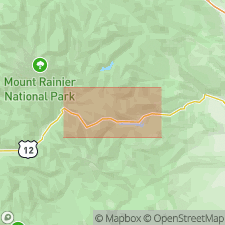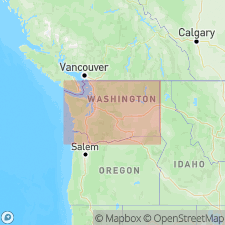
- Usage in publication:
-
- Tumac Mountain Olivine Basalt
- Modifications:
-
- Named
- Dominant lithology:
-
- Basalt
- AAPG geologic province:
-
- Cascades province
Summary:
Named credited to A.T. Abbott (1953, unpub. PhD thesis). Lavas form Tumac Plateau along Cascade Crest between Carlton Pass and White Pass and form intracanyon flows in Summit and Indian Creeks, Yakima Co, WA. Geologic sketch map and structure section of White Pass Region show unit unconformably overlies Russell Ranch Formation, is in fault contact with pre-Tertiary Indian Creek Amphibolite (new) at Clear Lake fault zone, and is intruded by Jug Lake pluton. Age given as Quaternary.
Source: GNU records (USGS DDS-6; Menlo GNULEX).

- Usage in publication:
-
- Tumac Mountain Basalt
- Modifications:
-
- Age modified
- AAPG geologic province:
-
- Cascades province
Summary:
Tumac Mountain Basalt of Ellingson (1972) described as gray, phyric, olivine basalt. Underlies glaciated plateau capped by postglacial Tumac Mountain cinder cone. Age given as 30,000(?) to 10,000(?) yr B.P.
Source: GNU records (USGS DDS-6; Menlo GNULEX).
For more information, please contact Nancy Stamm, Geologic Names Committee Secretary.
Asterisk (*) indicates published by U.S. Geological Survey authors.
"No current usage" (†) implies that a name has been abandoned or has fallen into disuse. Former usage and, if known, replacement name given in parentheses ( ).
Slash (/) indicates name conflicts with nomenclatural guidelines (CSN, 1933; ACSN, 1961, 1970; NACSN, 1983, 2005, 2021). May be explained within brackets ([ ]).

